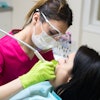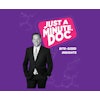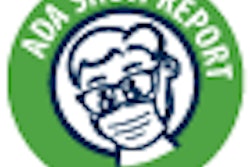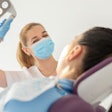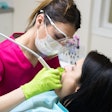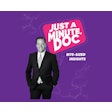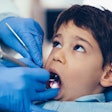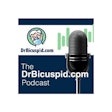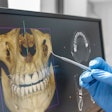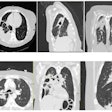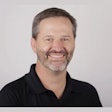
The granddad of U.S. dentistry is ashamed of his family. "What we do in America is embarrassing," Gordon Christensen, D.D.S., M.S., Ph.D., said at the ADA meeting in San Antonio this month.
With his Clinicians Report review, Scottsdale Center for Dentistry courses, frequent bylines in the Journal of the American Dental Association, and popular talks at dental meetings, Dr. Christensen may be the most influential U.S. dentist. So it means something when he deplores the state of the profession in his own country.
Dr. Christensen offered several unfavorable comparisons between dentistry in the U.S. and other countries during a panel discussion about controversies in dentistry, which he moderated at the ADA meeting. He also touched on such questions as mini-implants, cracked teeth, light-activated whitening, and articaine.
He mentioned his embarrassment in the context of choosing when a crown is appropriate. He said many U.S. dentists place porcelain fused to metal (PFM) crowns in cases in which he might recommend an onlay.
"We don't have to go hog wild with the crowns," he said. "The typical PFM crown in the U.S. is hideous, absolutely hideous. I go to Switzerland and I have to take my very best stuff because I'm embarrassed by a lot of the stuff we do in America."
The biggest dental organization in the U.S. had no reaction to this criticism. An ADA spokesperson said the association declined to comment.
Dr. Christensen did offer a saving grace with regard to U.S. crowns. "We're doing it at a very moderate level of cost: $800 to $1,000 is the average, where over there you will find $3,000."
But in general, U.S. dentists are losing credibility, he warned. He showed results from a poll in which dentistry had dropped lower in comparison to other professions. "You can see where we are -- we're No. 5. We used to be, believe it not, No. 1. Are we going in the right direction?"
Dr. Christensen suggested U.S. dentists have gotten behind on technological trends. When he polled the audience to see how many were using electric handpieces, he noted that, "If I were in London right now or Zurich, all of you would raise your hands."
Behind on implants
Dr. Christensen also argued that more general dentists in the U.S. should place implants. He estimated that only 6% to 15% of U.S. dentists are placing them now.
"I've been doing implants for over 20 years," said Dr. Christensen, who is a prosthodontist. "I find it's one of the simpler things that I do. There are so many things that are more aggressive and more threatening than doing an implant on a healthy person with good bones.... It's simpler than doing a third molar extraction. There is far more legal activity around third molar extractions than in implants. Yes, you ought to be doing it."
And once again he said that dentists in other countries are ahead of the U.S. "In Israel, a developing country, 95% are doing dental implants, in Latin America 50% to 60%."
Dr. Christensen added that dentists should not shy away from mini-implants. "Yes, they should be used," he said. "There are 40 million edentulous people in the United States, and I would guess at least two-thirds or three-quarters of them don't have enough bone for a normal implant."
Mini-implants can also save money for frugal patients, he added. "If one of them falls out, big whoopee. It has expanded the bone, and so when you take it out within even a few weeks, the bone has come back. It's not like a normal implant with a big hole you need to drain.... Move it over 3 mm and screw in again."
But technique is important when using these smaller implants. "They've got to be put in right," Dr. Christensen noted. "Two minis in a surface area of 1.8 mm equals one standard implant, 3.75 [mm]. So put in two for one and keep them low like a sports car, not like an SUV."
Behind in radiography
Dr. Christensen also argued that "we're way behind other countries" in adopting digital x-ray equipment.
He uses digital himself, in part because of the ease of storing images. But he offered a less than ringing endorsement of the latest high-tech imaging systems, such as standard computed tomography (CT) or cone-beam CT.
"You lose the definition, the contrast," Dr. Christensen said. "You've got multiple shades of grey.... Almost every one of those that are digital [radiographs] is second class to an analog radiograph. Period. Exclamation mark. To make them as good, not better, you have to enhance color and texture and go from there."
He said he likes conventional (as opposed to computerized) tomography for planning implants, though periapical radiographs help him "a lot" and panoramic helps "some."
Opinions, opinions
Dr. Christensen also offered his characteristic strong opinions on a wide range of other topics:
Restoration materials: He pointed to a poll of the American Academy of Esthetic Dentistry. "When asked, esthetic dentists said in their own mouth on second molars, upper molars they want gold. First molars on the lower they want gold. First molars upper they want metal occlusals with porcelain facials. When they got to the premolars and forward, they started talking white." But in their patients, he said, the same dentists rarely use gold, but instead place white materials all over.
Light-activated whitening: The lights used don't get hot enough to make a significant difference, Dr. Christensen said.
Cracked teeth: There are many types of cracks -- superficial cracks in enamel, cracks that extend below the gingival, and cracks that go below the bone. "So here's my approach: I'll tell the patient I don't know where this crack is. I haven't the slightest idea. I'll show the patient a video. It shows them these different kinds of cracks," he said. He then prepares the tooth. A crack that extends below the gingiva but not the bone will fly off during the preparation.
"If it's down further, slightly under the bone or more under the bone, I don't know if I can heal it or not. So I'm going to cut the crack and put a provisional on it with Eugenol cement," Dr. Christensen said. Three or four days later, he asks the patient to bite on a pencil. If the tooth still hurts, he gives the patient a choice between root canal therapy and an extraction.
Evidence-based medicine: "I get nauseated when I hear this phrase," he said. Although physician David Sackett, M.D., the father of "evidence-based medicine," originally incorporated clinical experience into his definition of the phrase, Dr. Christensen complained that too many people in dentistry have forgotten that aspect. "We have got it totally wrong in dentistry right now," he said. "It's as if we never had evidence before.... Third parties are using it to our disadvantage."
Articaine: U.S. dentists have more problems with paresthesia than European dentists, Dr. Christensen said, because they work too fast and use too large a dose of the anesthetic.
Bruxism: Dentists should be making more splints, he said. "One-third of the world's population has aggressive chewing habits. We're negligent if we don't say to the patient, 'You're chewing your teeth down. Look at mine, I'm 90 years old and mine are long. Look at yours, they're little bloody nubbins.' "
What if the patient balks? "A typical bruxing person chews his or her teeth up to six hours a night. A normal person has only a few minutes of tooth contact a day," Dr. Christensen said. "So I often say, 'You're going to have 50 or a 100 days' wear on your teeth tonight. You need something in there. And if you don't wear it, you're going to have teeth looking like this' -- and I show them a picture."
The session ended at that point, but Dr. Christensen looked ready to offer opinions as long as anyone would listen.


